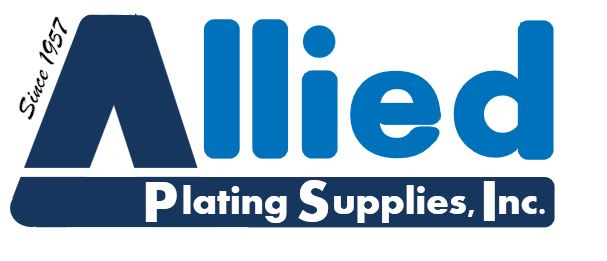SURFACE PREPARATION
| Tank | Process | Temp F | Material | Equipment | Comments |
|---|---|---|---|---|---|
| 1 | Soak Clean | 140 | Steel or Polypropylene | Heater (Steel or SS) | Optional vent water vapor |
| 2 | Cold Water Rinse | Ambient | Steel or Polypropylene | Bottom fed, continuously overflowing | |
| 3 | Alkaline Etch | 140 | Steel or Polypropylene | Heater (Steel or SS) | Vent hydrogen bubbles coated with caustic |
| 4 | Cold Water Rinse | Ambient | Steel or Polypropylene | Bottom fed, continuously overflowing | |
| 5 | Deoxidizer Desmut | Ambient | Polypropylene or PVC | Air Agitate | |
| 6 | Double Cold Water Rinse | Ambient | Polypropylene or PVC | Air Agitate | |
| ANODIZE | |||||
| 7 | Anodize, sulfuric | 25 to 72 | Polypropylene or PVC, some use lead | Chiller, Heat Exchanger, Rectifier | Air Agitate, vent hydrogen bubbles coated with sulfuric acid. Chill against wattage input of d.c.power supply |
| 8 | Cold Water Rinse | Ambient | Polypropylene or PVC | Air Agitate, bottom fed, continuously overflowing | |
| 9 | 5% Nitric Acid | Ambient | PVC, but many use Polypropylene | Change frequently because sulfate builds up. | |
| 10 | Cold Water Rinse | Ambient | Polypropylene or PVC | Air Agitate, may cascade to Tank 8 | |
| 11 | Dye | 140 | Polypropylene, PVC, or stainless steel | Heater (Steel or SS) | Air Agitate. If stainless steel insulate the load bar. May have galvanic problems with stainless steel |
| 12 | Cold Water Rinse | Ambient | Polypropylene or PVC | Two rinses preferred, plus another for each different dye color | |
| 13 | Seal | 180- 212 | Stainless Steel | Heater (Steel or SS) | Random Air Agitate |
| 14 | Hot Water Rinse | 205 | Stainless Steel | Heater (Steel or SS) | Change Frequently |
| CHROMATE | |||||
| 7 | Chromate | Ambient | Polypropylene or PVC | Moderate Air Agitate | |
| 8 | Stagnant Cold Water Rinse | Ambient | Polypropylene or PVC | See Figure 3-3 | |
| 9 | Stagnant Cold Water Rinse | Ambient | Polypropylene or PVC | ||
| 10 | Stagnant Cold Water Rinse | Ambient | Polypropylene or PVC |
||
